
UKHillwalking's 3000-ers season continues with a long look back at a Munro round that's spanned six decades. Site user Sean Kelly started bagging them back in 1968, though he didn’t know it at the time. He’s still got a few to go. Sean’s photo gallery is in the Top 10 on the site, and we’ve used some of his best to go with this feature.
Into my heart an air that kills; From yon far country blows; What are those Blue Remembered Hills; What spires, what farms are those? This is the land of lost content; I see it shining plain; The happy highways where I went; And cannot come again. A.E Housman
It was January 1970, I think, and I was up at Jean’s Hut, high in Coire an Lochan. There was plenty of snow and plenty of vile smelling bodies, 18 of them crammed into a bothy with only six sleeping spaces. I surveyed the scene as teams departed with ambitious plans and heavy sacs adorned with ropes and crampons. Condensation was a problem as six inches of water sploshed around the floor. The corrugated iron roof didn’t help matters. The reek of paraffin drifted across the room from stoves and little coffee tins, from which a small lace protruded to produce a flickering flame that illuminated this sordid scene. Cunningham appeared shortly on the way up the hill with a group from the Lodge, and moaned about the general squalor or was it the ambiance of the place.
There slowly appeared an amorphous shape from the bunk above, a figure somehow lost amongst the general clutter of ropes and sacs. And so we ended up climbing together as two pairs, threading a route up Ewan Buttress in deep powder. I recall a wide step but the way was nothing too difficult and at the top as we un-roped I suggested we go to bag Ben Macdui. He apologised but explained that he had to dash off to Hells Lum, to retrieve a camera that had been inadvertently left behind the previous day. (That was not all he left behind, as a red Cairngorms guide now resides on my library shelf).
"What was so intriguing at the time, was the fact that a hundred people, yes a hundred people, could be troubled to climb all of the 3000ft peaks!"
Besides, he added casually, I’ve done all these peaks before. Indeed he had. He was Mick Geddes, who had completed the Munros by the age of 18 (Munroist no.100). In a few days he would make a first repeat ascent of the Smith-Marshall route on the Orion Face with Alan Rouse, a climb that had a mega reputation at the time, and was one of many unrepeated routes for which the Ben and famous ‘Clough guide’ was renown. He was to die tragically young from cancer.
What was so intriguing at the time, was the fact that a hundred people, yes a hundred people, could be troubled to climb all of the 3000ft peaks in Scotland! The Three Peaks, yes. The Marsden-Edale, yes. The Scottish fours, yes. But an attempt to climb all the Scottish Munros? Today, it is easy to accommodate this long-term obsession even if not fully understanding it. Back then though there were not many books on Munros other than the list of the ‘Tables’. So what was the point of all this?
Someone once asked the great Louis Armstrong what it was that he got out of Jazz? “If you’ve gotta ask man, you’ll nevva gunna know.”
It is much the same with Munro bagging. Until you’ve tried it, you'll nevva gunna know. But that was not my intention. I was fresh out of college and winter routes were what counted. Not boring hill bashing. There was no excitement in that sort of activity. No challenge, no tick in the guide. Front pointing was just emerging from an apprenticeship served in the step-cutting tradition, until then a mandatory requirement for Scottish winter climbing. So the idea of flogging up some unpronounceable name of a mountain didn’t appeal. Besides, that was only walking and not real climbing.
I’d climbed my first in 1968, a fabulous day on Aonach Eagach’s two. But back then the idea of actually attempting to climb all the Munros never occurred to me. That came quite late in the plan. It kind of sneaked up on us in the mid 90’s when I casually counted up the peaks climbed in a lifetime of travelling north, usually late on a Friday night in the depths of winter. It didn’t amount to much because we always went to the same places, the Coe, the Ben, Meggy and the Cairngorms. Summer was essentially set aside for greater ranges in Europe and further afield.
It really began with a failed summer attempt of Tower Ridge, on a driech day of thick mist and heavy rain, when swimming would have been a more suitable technique than climbing. And so in search of better weather, we moved west to Ardgour and the Great Ridge and surveyed an area that was totally new, looking north to Knoydart and unfamiliar mountains by the score. More classic ridges soon followed such as the Angel’s Peak in the Cairngorms, and the Pinnacle ridge of Sgurr nan Gillian. But all this was not strictly Munro bagging, more a gentle introduction to other untrodden ground. The following summer saw ascents of the Five Sisters and a trip up to the far north to climb Ben Hope. Yes this was a kind of Munro bagging but I was not actually ticking off names on a list or from a book. That would follow in due course when the full realisation of my addiction dawned.
And so over the next few years the total gradually increased and knowledge of secret corners of the Highlands gradually revealed. We paid a gillie to boat us into the far reaches of Loch Mullardoch and were rewarded by close encounters with a golden eagle, keenly intent on its prey, a small field-mouse clinging precariously to a thin blade of grass. Another boat carried us into Knoydart and Ladhar Bheinn, accompanied by an inquisitive dolphin.
The rot really set in with the purchase of McNeish’s Munro mini-guide cunningly designed to fit into an anorak pocket or sac lid. And so the ticking began in earnest, and the planning for that next trip. Any peaks not reaching the magic 3000ft level were relegated to retirement or even later if necessary. Harold liked the facilities at Ratagan Hostel and so we concentrated on this area initially, which included the superb South Kintail Ridge when seven Munros were completed on a long hard hot day. I can still recall the return along a stalkers track, obviously well used by many ponies that had also been this way.
But the real benefit of climbing Munros has been exploring lesser known corners of the highlands, such as Glen Affric, Loch Ossian, Knoydart & the Letterewe Forest. Access to these areas often involves either camping, use of a bothy or remote hostel. Shenavall bothy in Letterewe is a beautiful location and setting for exploring remote A’Mhaighdean & Ruadh Stac Mor, although the unavoidable crossing of the Abhainn Strath na Sealga does introduce an element of trepidation into any expedition in all but settled weather. To be stranded on the wrong side after heavy rain, after a long hard day is not to be contemplated.
"The rot really set in with the purchase of McNeish’s Munro mini-guide cunningly designed to fit into an anorak pocket or sac lid. And so the ticking began in earnest"
The youth hostel at Loch Ossian is another excellent base for exploring the Ben Alder range, with about a dozen Munros to go at. We traversed the Beinn Eibhinn group and stayed at Culra bothy but the planned return over Ben Alder was postponed because of atrocious weather, so we beat a retreat through the Bealach Dubh. Well it took Philip Gribbon five attempts to bag it. The toilet at the hostel recalls early memories of Ty Powdyr and the ‘Elsan’. Loch Ossian also had a chemical toilet, fortuitously away from the main building. One evening, Harold was in 'residence', when there was a violent shaking of the toilet door. Thinking that somebody was in-extremis, he cautiously opened the door to be greeted by one large... stag. The animal was quite tame and was only after food, I think!
Glen Affric is the best base for investigating the charms of Sgurr nan Ceathreamhnan. Heavy rain over several days did not deter us from an ascent of this vast mountain with spurs radiating out over ten miles or more in many directions. Mullach na Dheiragain, (we named them Kerrynan & Jerrycan), is one such spur with its own Munro. The traverse of the twin summits of Ceathreamhnan, in strong winds, is not without interest, as one hand clutches the map and the other grasps the crest. Two bedraggled souls returned to our cosy little hostel, lucky to be greeted by a warm glowing fire, malt whisky and twenty others seeking shelter from the storm.
Jim Gregson had first mentioned that the Fannichs were worth exploration a few years back, so on inspecting the guide it appeared possible to bag all of them in a single expedition. Reality, in the shape of weather and denied access to Loch Fannich, caused us to re-think our plan of assault, and it took three days to complete the round. Unusually on Meall a’Chrasgaidh as we cowered in the summit shelter, the torrential rain was blasted right over our heads by the force of the wind, so keeping us completely dry. There is an illuminating account of Munro spending a night vainly trying to find a way off this summit towards Loch a’Bhraoin, chiefly because they only had matches for light as head-torches hadn’t then been invented. Our only misfortune was a long walk back, after failing to thumb a lift along the A835 from Loch Glascarnoch to the car parked at the head of the glen.
The ascent of Sgurr Breac was cause for minor celebration as it was my 100th Munro. These landmarks are important, as it is essential to have intermediate targets to aim at. But whenever I meet somebody else pursuing the same goal, they always seem to have fewer to go. For about five years we annually encountered a German teacher who was coming over to the highlands every summer to tick off his Munros, and had now graduated to the Corbetts. Rushing down from Stob a’Choire Odhair (Blackmount), because of the imminent approach of bad weather, we passed Janet Street-Porter also engaged on the divine quest. I am pleased to report that she must have got a right soaking, as the heavens opened just as we reached the car.
Sitting in the Clachaig one day, after another crossing of the Aonach Eagach, a very, very wet walker entered and sat opposite us, and slowly a pool of water drained and gradually formed around him. It transpired that he was a party researcher at Westminster, and had been doing his round with the late Labour leader John Smith, who had tragically died earlier that month. He recounted how he had earlier that week removed all of Smith’s possessions from his office, including the Munro chart pinned on his office wall. It detailed nearly 200 ascents.
Climbing the Munros has assumed a certain cult status today, rather similar to Everest. Not only the sheer numbers that are attempting the feat, but the diversity within these attempts. We have had them done in one walk. They have been done in winter [Steve Perry 2005-6, Ed.], run by some madman in 39 days [Stephen Pyke 2010, Ed.] and I recently read of someone who has completed in an overall time span of 70 years [even more impressive than you Sean, Ed.]. What about the first completion by bicycle, walking backwards, hopping on one leg?
Few ascents pose any real problem for the walker with perhaps the exception being the mountains on Skye. However it is indeed possible to make an ascent more adventurous by including a climb as part of that ascent. Although the Inn Pin is the only Munro that requires rock-climbing skills, especially in descent, other peaks offer great opportunities. My first ascent of Bla Bheinn for instance took in the Great Prow, only VS on the first pitch, but certainly ‘out there’. See the wonderful picture in Gordon Stainforth’s book on the Cuillin. My second ascent via Clach Glas gave a memorable day in perfect weather. Indeed, it was so hot that we set off at six in the morning to climb in the cooler part of the day. The main problem was not so much the difficulty of the scrambling, but working out exactly where the route went. The final Tower is very impressive, with great exposure on all sides. Locating the correct chimney line on Blaven is not without interest too. The Inn Pin gave us a fine finale to our circuit of Coire Lagan. We didn’t bother with the hassle of carrying a rope as we expected to hitch a lift on someone else’s. By the time I summited there must have been six teams in the queue so we elected to reverse the East Ridge, a tricky manoeuvre, which must be the most exposed bit of down-climbing on any Munro.
"Eventually there will come a day when the last Munro will be climbed. Which should it be?"
Obviously the ascent of the Ben via Tower Ridge involves much scrambling but my only ascent was completed with Jim Simon in full winter conditions and we can’t be sure that we actually trod the summit because of the weather. On another occasion climbing with Al Metelko on Ledge Route, he refused to go to the summit, saying he was saving it to be his last Munro. I did actually succeed in gaining the summit with Joe Flynn after threading our way through a tight hole in Gardyloo Gully, akin to squeezing a cork from a bottle.
The weather can have a dramatic influence on how one views a climb.
A winter traverse of the Grey Corries was a particularly character-building’ experience, complete with a bivvy in a snowhole on Aonach Beag, before continuing along the remainder of the ridge in total white-out conditions. The wind and wet snow made navigation testing. My companion succeeded in losing both maps, whipped from the tenuous grip of her woolly Dashteins. Breaking my spectacles did not improve matters. By the time we descended through the Leanachan Forest, wading though eighteen inches of deep slush, I had never been so wet for such a sustained period. Trench foot was a distinct possibility. The crossing of the Allt Choimhlidh via the old dismantled railway, the sleepers of which had either rotted away or been thoughtfully removed, meant balancing on the old tracks, with the river in full spate below.
Eventually there will come a day when the last Munro will be climbed. Which should it be? The highest and most difficult already have been summited. Something close to the road and a convenient hut, so Uncle Tom Cobley and all will be present to celebrate the event? Or perhaps a peak that takes a little effort to access, such as Ben More on Mull, a popular choice as the final Munro. Or maybe it will be left to chance. After 46 years only a dozen now remain to be ascended, and weather permitting I hope to conclude this marathon, but enjoyable task, later this year.



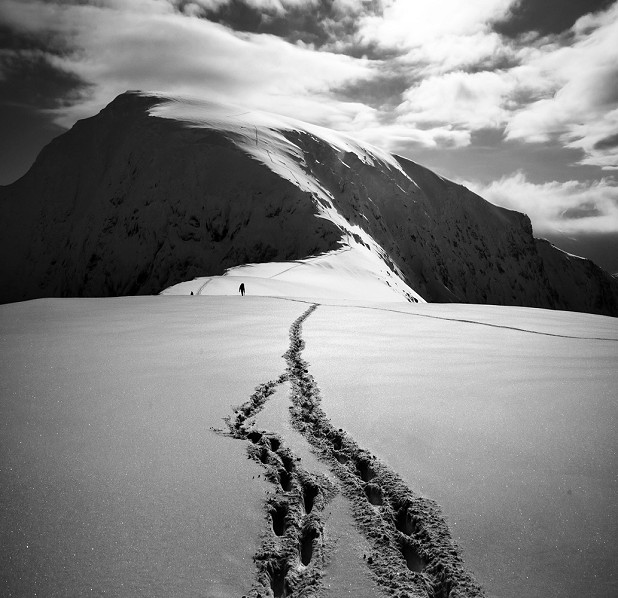

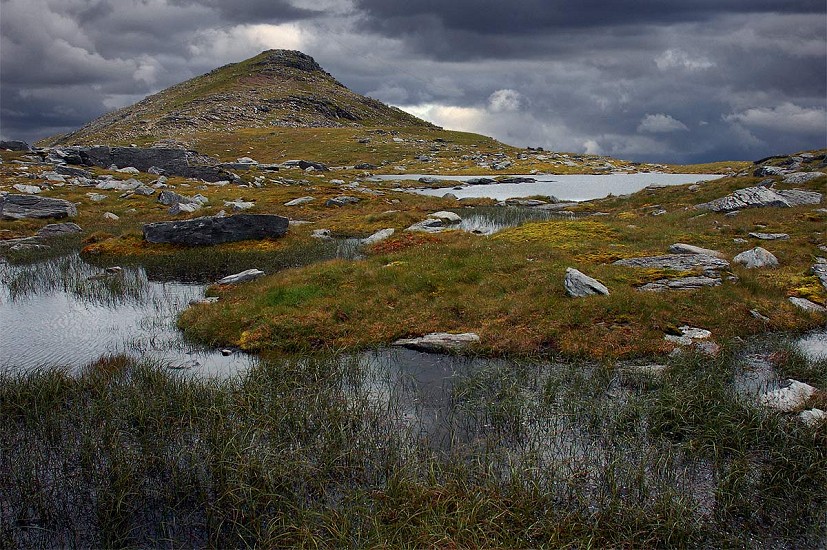

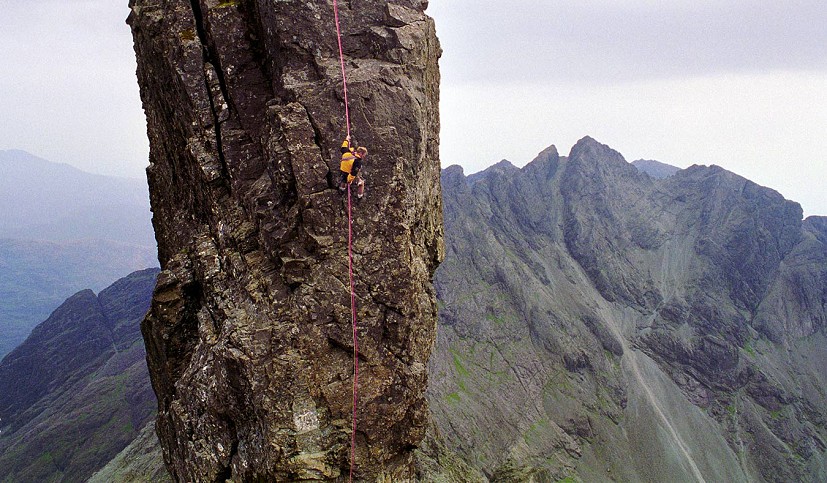
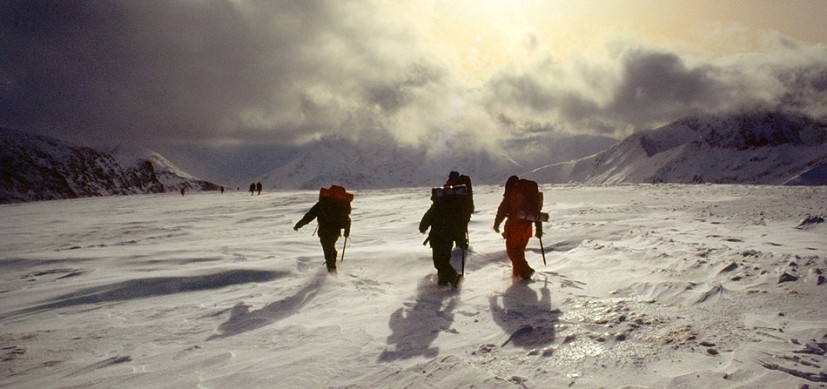

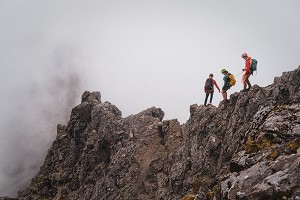
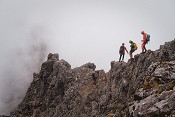




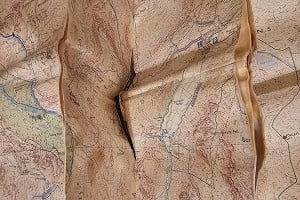
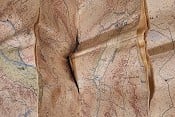
Comments